
Oh, hey there, fellow car enthusiasts and casual scroll-throughers! Remember those glory days when cruising down the street in *that* specific car made you feel like you were starring in your own music video? The wind in your hair, the tunes blasting, and a distinct sense that you were, without a doubt, the coolest person on the asphalt. Well, buckle up, because for a whole bunch of vehicles that once commanded such adoration, those days are, shall we say, a distant, slightly embarrassing memory.
It’s wild how quickly automotive trends can turn. What seemed like a stroke of genius yesterday can feel like a total head-scratcher today. From flashy sports cars that promised street cred to trendy SUVs that screamed ‘I’ve arrived,’ some rides have genuinely lost their magic, morphing into rolling monuments of questionable taste. They’re the automotive equivalent of wearing frosted tips to a job interview in 2024 – a stark, uncomfortable reminder of a bygone era that really should stay bygone.
We’re talking about those cars that, upon seeing them now, trigger a physical reaction – a quick eye-roll, a subtle wince, or perhaps a full-blown internal scream of ‘Oh, honey, no!’ It’s time to take a brutally honest, but totally fun, look back at some vehicles that went from being celebrated trendsetters to undeniable sources of automotive cringe. Get ready to reminisce, maybe squirm a little, and definitely nod in agreement as we unpack the unfortunate transformations of these once-loved rides.
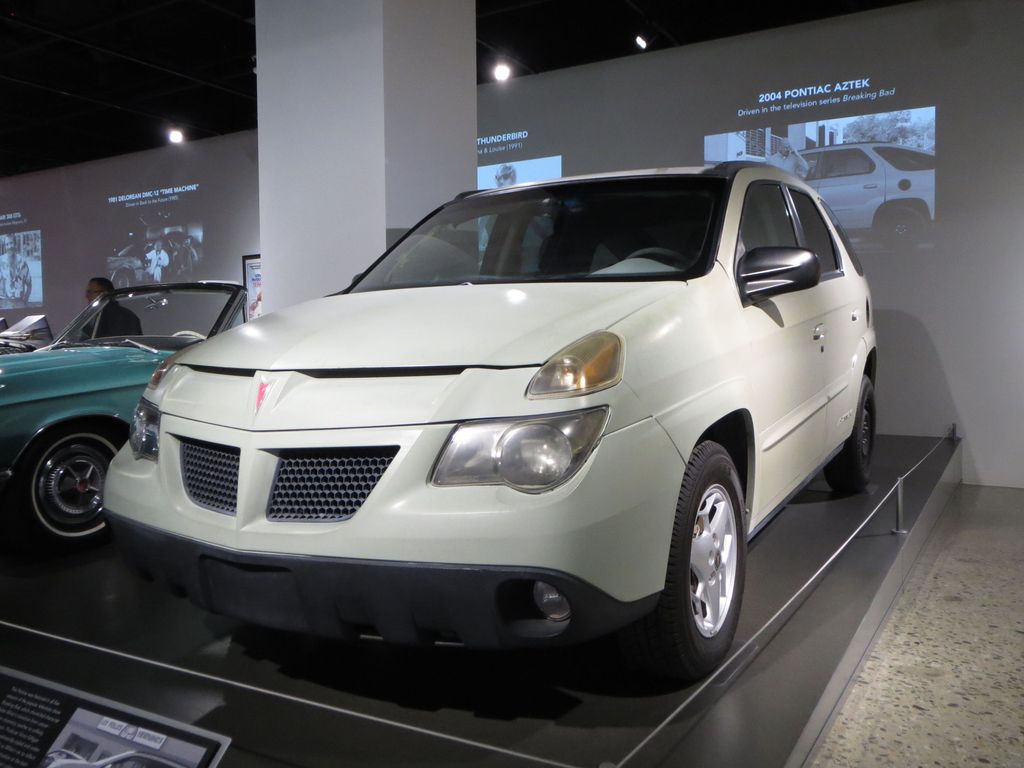
1. **Pontiac Aztek**: Ah, the Pontiac Aztek. Where do we even begin with this one? General Motors, bless their hearts, genuinely believed they were ushering in a new era of automotive design when they unleashed this… creation upon the world. They envisioned something super modern, a vehicle that would redefine the SUV segment with its avant-garde styling and innovative features. The marketing, surely, painted a picture of a futuristic, versatile machine for the adventurous soul.
Instead, what rolled off the production line looked less like a modern marvel and more like a fever dream. Critics and consumers alike were left scratching their heads, wondering if someone had taken a regular SUV and, as one might put it, ‘hit it with a hammer from every angle.’ Those weird plastic panels and strange angles were meant to be pioneering, but they resulted in something that looked disturbingly like a ‘spaceship designed by someone who had never seen a spaceship.’ It was a truly baffling aesthetic choice that defied conventional beauty standards, and not in a good, edgy way.
Even with some genuinely cool features hidden beneath its perplexing exterior, like a built-in tent and camping gear, the Aztek’s looks proved to be an insurmountable hurdle for most. The general public simply couldn’t get past its challenging appearance. Pulitzer prize-winning auto critic Dan Neil famously declared, “This car could not have been more instantly hated if it had a swastika tattooed on its forehead,” further elaborating that it was a “plastic-clad mess… deformed and scary.” Talk about a scathing review!
So, while it might have harbored a ‘useful, competent crossover’ underneath, as Neil conceded, its visual identity condemned it to infamy. The Aztek quickly became the punchline to every automotive joke, a symbol of design gone terribly wrong. It was a bold swing that, unfortunately for Pontiac and for drivers’ eyes everywhere, turned out to be a massive, cringe-inducing miss.
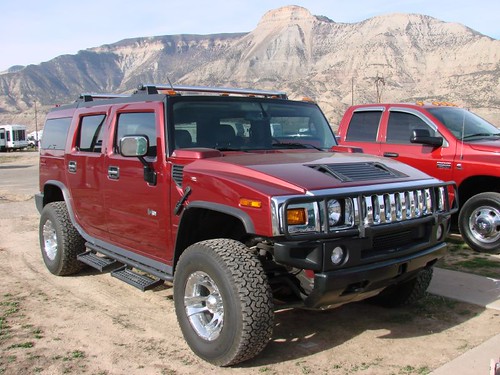
2. **Hummer H2**: The early 2000s were a wild time, weren’t they? It was an era where bigger was undeniably better, and everyone seemingly wanted to channel their inner military personnel, even if their toughest daily commute was to the local Starbucks. The Hummer H2 arrived on the scene promising exactly that: a rugged, go-anywhere beast designed to make you look tough and perpetually ready for some off-road adventure, even if that adventure was just parallel parking outside a crowded mall.
Back then, gas prices were laughably low compared to today, so the shocking reality of getting a mere eight miles per gallon didn’t seem to faze owners. The sheer, colossal size of the H2 was a huge part of its appeal, making parking a nightmare but giving drivers an undeniable sense of power and elevated status as they towered over lesser vehicles. It was the ultimate statement piece for those who believed that presence was everything.
Fast forward to today, and the H2’s once-brash appeal has curdled into pure cringe. It now screams ‘wasteful and impractical’ louder than a broken exhaust pipe. With growing awareness about climate change and environmental impact, these gas-guzzling monsters have aged spectacularly poorly, coming across as selfish and utterly outdated. The image they project has shifted from ‘rugged individualist’ to ‘oblivious energy hog.’
And let’s be real, how many H2 owners actually took their behemoths off-road? For most, it was a suburban status symbol, making the whole tough-guy image seem entirely fake and try-hard. It’s now the poster child for over-the-top excess, with online communities even creating sites like FUH2.com, which aptly describes it as “the ultimate poseur vehicle.” Driving one now is less about projecting strength and more about broadcasting a profound lack of awareness, a truly cringe-worthy transformation.
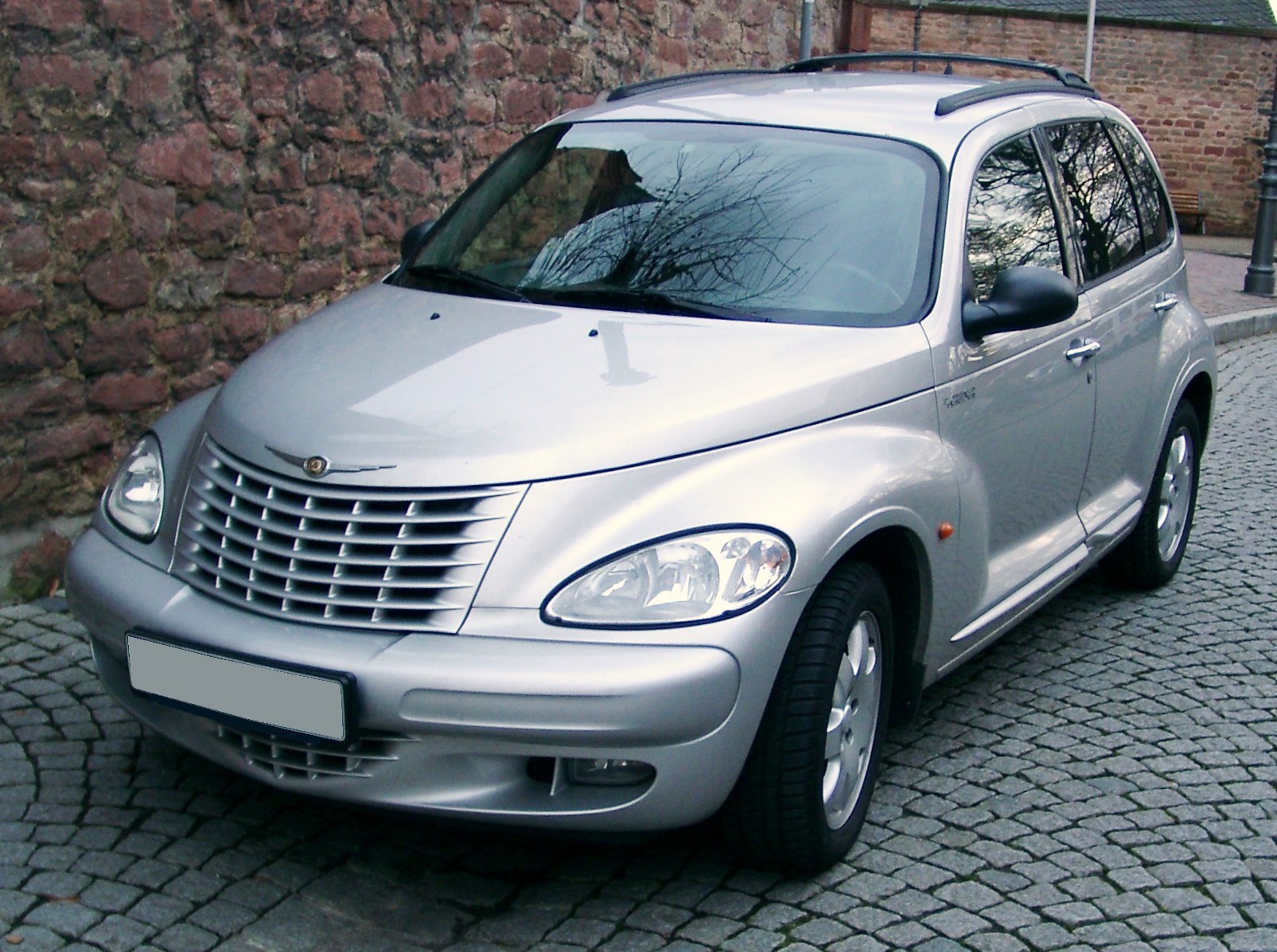
3. **Chrysler PT Cruiser**: Chrysler took a nostalgic leap with the PT Cruiser, attempting to whisk us back to the glamour and distinctive styling of the 1930s with this retro-styled wagon. When it first hit the streets, it genuinely caught people’s attention. It was cute, it was different, and it stood out from the sea of bland, anonymous sedans that dominated the roads. There was a genuine buzz around its quirky charm and unique silhouette.
Beyond its distinctive looks, the PT Cruiser offered some undeniably practical features. Its interior boasted a surprising amount of cargo space, making it a versatile option for families or anyone needing to haul a bit more than usual. The removable seats added another layer of utility, catering to those who valued flexibility in their vehicle. Marketing efforts played into this, positioning it as the perfect car for creative, fun-loving individuals who dared to be different.
However, like many fleeting fads, the novelty of the PT Cruiser wore off with a speed that left many drivers feeling a little… sheepish. The initial charm quickly faded when people realized that beneath the distinctive costume, it was, at its core, a fairly standard economy car. The build quality, unfortunately, left much to be desired, and what once seemed like charming retro-styling began to feel annoying and dated, rather than timeless.
Today, the PT Cruiser has cemented its place in the automotive hall of cringe. It looks less like a stylish homage to the past and more like a failed, slightly desperate attempt at being quirky. According to surveys, it’s now widely considered “too Grandpa” to drive, a label that perfectly encapsulates its unfortunate descent from a celebrated retro revival to a vehicle that triggers a collective groan whenever it rolls by. It’s a testament to how quickly an admired design can sour into an emblem of past aesthetic misjudgments.

4. **Mitsubishi Eclipse (4th Generation)**: The Mitsubishi Eclipse had a solid reputation, especially its original iterations. Those early models were legitimate sports cars, boasting sleek designs and turbocharged engines that ignited the imaginations of young drivers. They felt fast, they looked cool, and they perfectly captured the thrill of street racing culture, heavily influenced by popular films like *Fast and Furious* which cemented the early Eclipse’s cool factor in the minds of a generation.
But then, something went awry. As the Eclipse evolved, Mitsubishi made some questionable design decisions that steered it dramatically off course. By the time the 4th generation rolled around, it had transformed from a lean, mean, street-racing machine into a heavier, slower convertible that oddly resembled a luxury cruiser. The brand kept the iconic Eclipse name, but in doing so, they seemed to throw away everything that had made the car special and desirable in the first place.
The later versions became, quite frankly, an embarrassment to the legacy. The styling, which tried to maintain a sporty facade, fooled absolutely nobody. The performance, once a highlight, was now terrible, failing to live up to the expectations set by its predecessors. It was a classic case of all show and absolutely no go, a sporty shell with none of the substance.
Driving a 4th-generation Eclipse now doesn’t evoke feelings of cool street racing; it simply makes people think you have a fundamental misunderstanding of what a good car, let alone a good sports car, entails. It’s a stark reminder of a brand losing its way, taking a beloved nameplate and dragging it through the mud of uninspired design and underwhelming performance. The cringe factor here is palpable, a true fall from grace for a once-respected name.

5. **Chevrolet SSR**: The Chevrolet SSR was truly a head-scratcher, an ambitious concoction designed by General Motors that aimed to be everything all at once: a pickup truck that could morph into a convertible. On paper, the concept sounded absolutely amazing – imagine combining the sheer fun and open-air thrill of a sports car with the practical utility of a truck. The retro styling was intended to evoke the cool, classic hot rods of the 1950s, promising a blend of nostalgia and modern flair.
Marketing campaigns painted a vibrant picture of weekend adventures, showing off at car shows, and generally having a blast with this unique machine. “My vision was to create a modern interpretation of the early 1950s classic pickup that has become the quintessential choice for street-rod custom trucks,” said former GM Design VP Wayne Cherry, highlighting the high aspirations behind its creation. It was meant to be a showstopper, a conversation starter, and a genuinely new way to experience driving.
However, reality, as it often does, hit hard. The SSR struggled to excel at being either a functional truck or a thrilling sports car, ultimately failing to deliver convincingly on both fronts. The truck bed, despite its presence, was laughably tiny, rendering its utility questionable at best. The performance, which should have been a highlight for a vehicle inspired by hot rods, was disappointing, leaving drivers wanting more.
Compounding these issues was the styling, which, instead of evoking classic cool, often looked cartoonish and out of place. It quickly became clear that the SSR was, as some might say, an ‘expensive toy that nobody actually needed or wanted.’ Its niche was so narrow it barely existed, leading to low production numbers of just 24,000 units. Today, it’s seen as a perplexing automotive experiment, a costly misstep that went from a fascinating concept to an undeniable source of cringe due to its inability to commit to a single, successful identity.
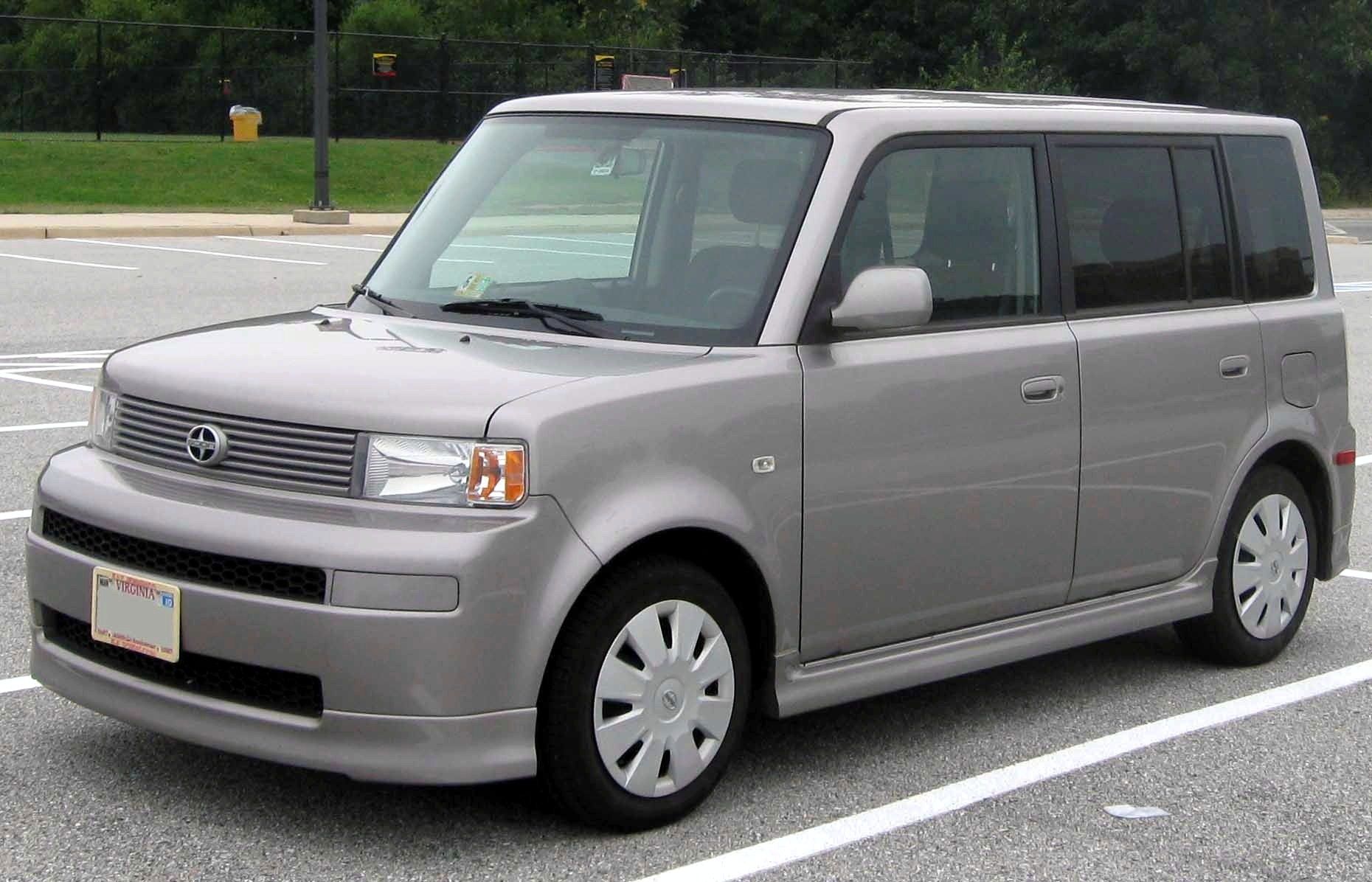
6. **Scion xB**: Toyota ventured into uncharted territory with the creation of the Scion brand, specifically targeting young, adventurous buyers who were tired of conventional car aesthetics. The Scion xB was meant to be the vanguard of this new movement, an ultimate expression of individuality for those who wanted to be different and cared little for traditional notions of car beauty. Its weird, boxy design was a defiant statement against the sleek, aerodynamic norms of the time.
Initially, this intentional quirkiness resonated with a specific demographic. Hip-hop artists and various creative types embraced the xB’s unusual shape, seeing it as a canvas for customization and a reflection of their own unique styles. Its spacious interior, a direct benefit of its boxy dimensions, coupled with an affordable price point, made it a popular choice among college students and urban dwellers seeking practical, budget-friendly transportation with a dose of personality.
But here’s the rub: being intentionally ugly has a surprisingly short shelf life. What starts as quirky and rebellious can quickly devolve into simply… ugly. Once the initial novelty wore off, people began to realize that they were, in essence, driving something that looked suspiciously like ‘a refrigerator on wheels.’ The design, initially celebrated for its difference, became a visual burden that lacked any enduring appeal.
Ultimately, the Scion brand itself met its demise, partly because the market eventually caught up to a fundamental truth: most people, even young and adventurous ones, still want cars that look good, not just different or attention-seeking. The xB’s journey from a hip statement to a rolling joke perfectly illustrates how a deliberate attempt at unconventional cool can quickly boomerang into total cringe, proving that some boxes are better left in the garage.
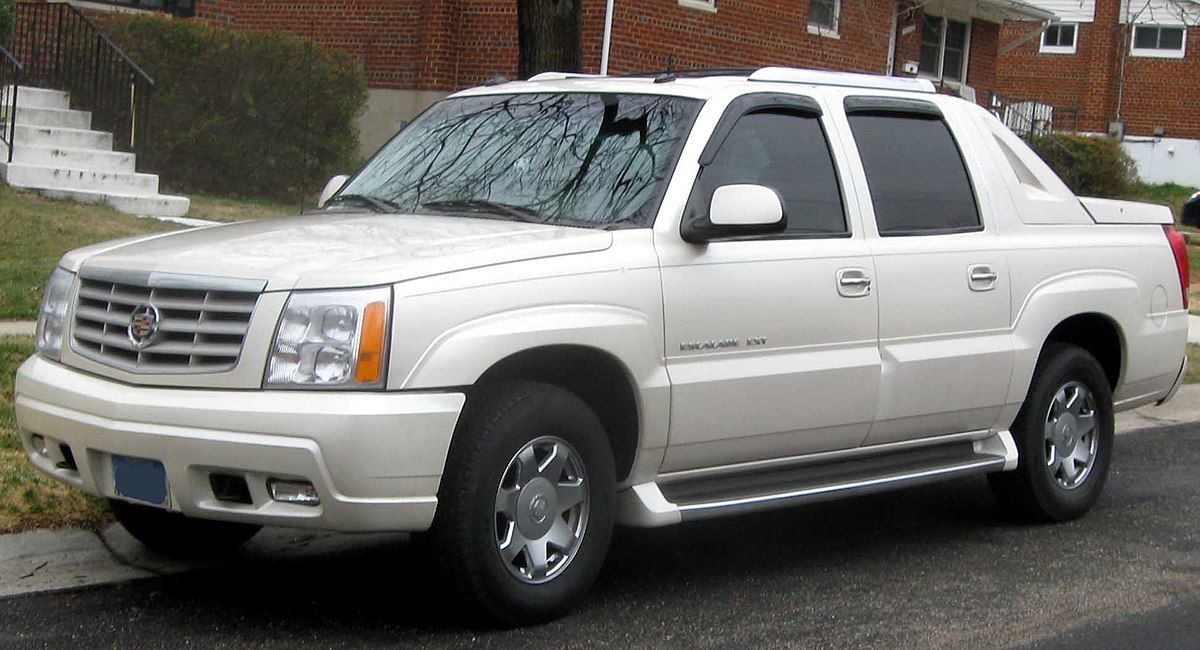
7. **Cadillac Escalade EXT**: In the early 2000s, Cadillac, never one to shy away from grand statements, decided to tackle the luxury truck market with a truly audacious offering: the Escalade EXT. The thinking was, apparently, that wealthy buyers who needed to haul stuff deserved something far fancier than a regular pickup. So, they brilliantly (or perhaps misguidedly) combined the opulent Escalade SUV with a truck bed, aiming to create the ultimate status symbol – a vehicle that screamed ‘I’m rich *and* I occasionally carry bespoke lumber.’
The EXT was a masterclass in bling. It came dripping in chrome, exuding an undeniable sense of excess and luxury that was meant to impress. Rich people, indeed, seemed to love the idea of having a truck that could rival the expense and flashiness of their SUVs. It was the epitome of conspicuous consumption, a vehicle designed purely to project an image of unparalleled wealth and a certain kind of over-the-top taste that defined the era.
Looking back, however, the Escalade EXT stands out as the absolute peak of wasteful excess. Its truck bed, despite its presence, was almost comically useless for actual truck work, often carpeted and covered, making it ill-suited for rugged tasks. The fuel economy was, predictably, horrible, adding another layer to its environmental and practical shortcomings. The entire package simply screamed ‘nouveau riche,’ a desperate attempt at opulence rather than genuine class.
Today, the Cadillac Escalade EXT represents everything that was wrong with early 2000s car culture. Its over-the-top luxury now appears tacky, desperate, and decidedly not impressive. It’s a relic of an era when more was always considered better, even if ‘more’ meant a completely impractical, gas-guzzling hybrid that served no real purpose beyond flexing at the valet stand. The EXT has undeniably moved from a symbol of aspiration to an object of genuine automotive cringe.
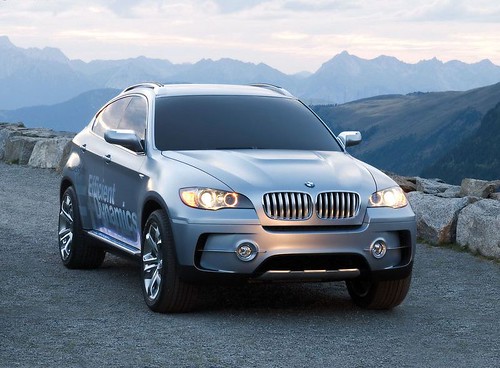
8. **BMW X6**: BMW, ever the innovator, took a bold leap in the mid-2000s, essentially inventing an entirely new vehicle category: the coupe SUV. Their creation, the BMW X6, was a weird mashup that combined the formidable stature of a regular X5 SUV with a dramatically sloping roofline. The design intent was clear: to create something that was both sporty and elegant, offering the ‘best of both worlds’ – the commanding presence and capability of an SUV blended with the sleek, dynamic styling of a sports car.
Marketing for the X6 heavily emphasized this dual nature, promising a vehicle that defied classification and delivered an exclusive, expensive image. Wealthy buyers, eager for something new and distinctive, were drawn to the X6’s unique proposition and the aura of prestige it projected. It was a vehicle designed for those who wanted to stand out, to drive something that signaled both their affluence and their taste for the avant-garde in automotive design.
Yet, the reality of the X6 proved to be far less impressive than its grand conceptual ambition. That defining sloped roofline, while visually distinct, came at a significant practical cost. It severely compromised rear-seat headroom, making the back almost unusable for adult passengers, and drastically reduced cargo space, undercutting the very utility expected from an SUV. Furthermore, despite its sporty pretensions, the X6 drove like what it fundamentally was: a heavy SUV, not a nimble sports car.
Today, the BMW X6 looks less like a groundbreaking innovation and more like BMW was simply ‘trying to create expensive solutions to problems that didn’t exist.’ The whole concept now strikes many as pointless and pretentious, a luxury vehicle that sacrificed functionality for a debatable aesthetic. It’s a prime example of a car that aimed for cutting-edge cool but landed squarely in the realm of automotive cringe, proving that not all experiments in design yield lasting admiration.
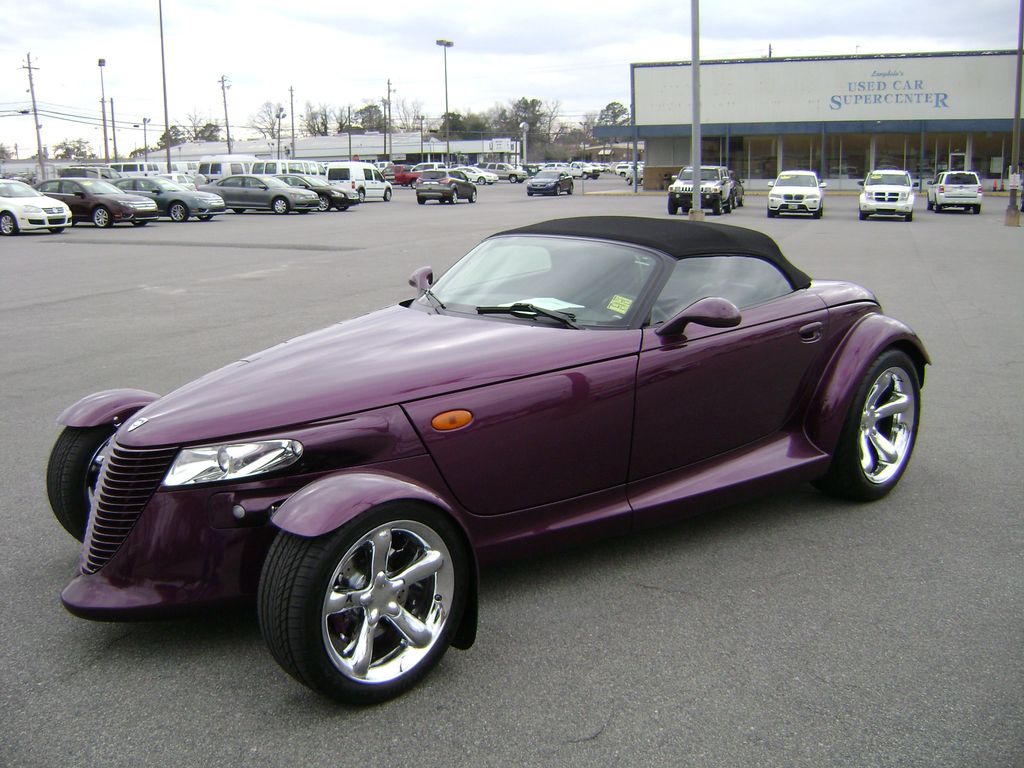
9. **Plymouth Prowler**: Plymouth really went for it, didn’t they? They wanted to prove they could build something genuinely exciting and future-forward, and for a hot minute, the Prowler looked like it. With its distinctive open wheels and radical, hot rod-inspired styling, it truly appeared to be a concept car that had somehow snuck off the design studio floor and straight into showrooms. Car enthusiasts were genuinely buzzing, thrilled to see an American company taking such bold risks with design, and its lightweight aluminum construction only added to the mystique of this truly unique appearance.
However, the excitement often died a swift death the moment people actually got behind the wheel. Imagine finally getting your hands on this futuristic beauty, only to find an underwhelming 3.5L SOHC V6 engine beneath that aggressive hood. Paired with a mandatory, uninspired 4-speed automatic transmission, the driving experience was, to put it mildly, boring and utterly devoid of the hot rod thrill its looks so loudly promised. It was all show and absolutely no go, a fundamental betrayal of its visual promise.
As time rolled on, the Prowler’s radical styling, once deemed daring, started to age rather poorly, sliding squarely into the territory of ‘trying too hard.’ Instead of a visionary concept, it began to look more like an expensive toy that prioritized bizarre aesthetics over actual driving prowess. Its existence constantly hinted at something spectacular, yet the on-road reality often left drivers feeling a distinct sense of ‘what’s the point?’ It was a vehicle designed for pure visual impact without the underlying substance.
Ultimately, the Prowler settled into its role as a perplexing automotive riddle, a bold fashion statement that forgot to be a truly great car. Its unique appearance, while still drawing eyes, now often evokes a sense of automotive vanity – a machine crafted for pure visual flair without the performance to back it up. It’s a classic example of a car that aimed for icon status but, for many who expected more than just a peculiar exterior, landed squarely in the realm of automotive cringe.
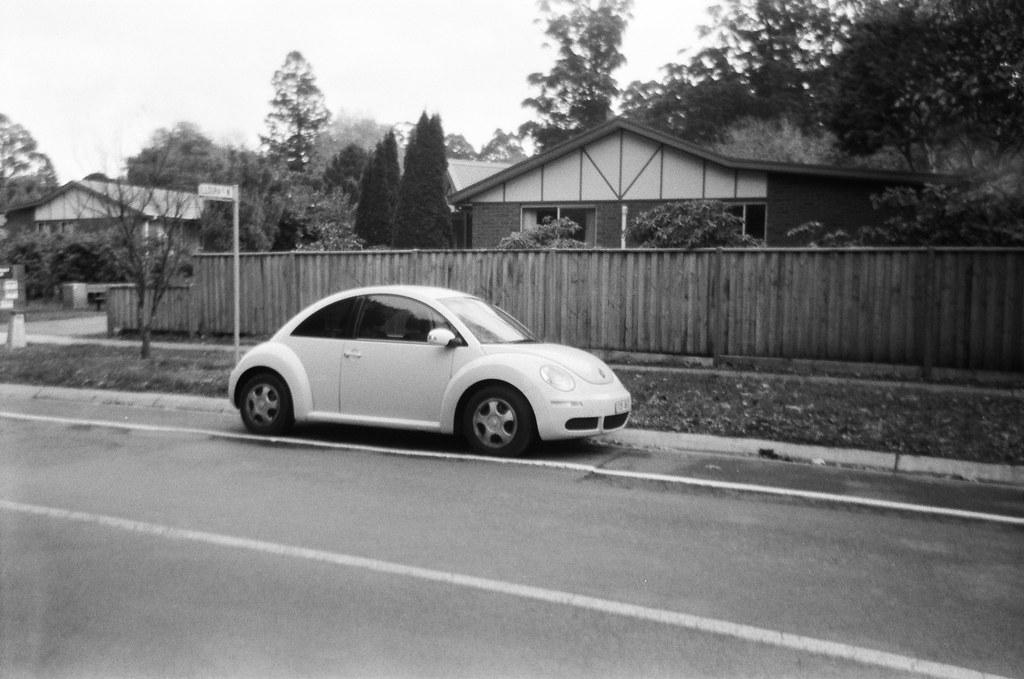
10. **Volkswagen New Beetle**: Volkswagen, ever the master of playing on our heartstrings, tried to recapture lightning in a bottle with the New Beetle. It was envisioned as a modern homage to their most famous car, updated with contemporary safety and reliability, but critically, it aimed to preserve that fun, carefree spirit of the original ‘hippie mobile.’ And for a while, it totally worked! Young women, especially, flocked to its cute, friendly design, perhaps even picturing the available flower vase on the dashboard as they dreamed of cruising away from boring, anonymous sedans and SUVs.
However, like many fleeting retro trends, the novelty of the New Beetle had a surprisingly short shelf life. What started as charmingly old-school and distinctive quickly began to look dated and, dare we say, a bit too ‘girly’ for a broad appeal. That intense ‘cute’ factor, once its biggest selling point, ironically became its biggest limitation. The visual commitment required to drive one was simply too much for many, particularly men, who swiftly moved on.
Adding to its decline, the ‘fake nostalgia’ aspect of the New Beetle started to feel incredibly forced. It wasn’t the raw, counter-culture icon its predecessor had been; at its core, it was just a regular Golf underneath a whimsical, often impractical, costume. People began to realize they were paying a premium for a vibe and a flower vase, not necessarily for superior engineering or groundbreaking performance. The initial charm swiftly gave way to an uncomfortable sense of manufactured quirkiness.
So, while it certainly had its moment in the sun, the Volkswagen New Beetle now often represents trying a little *too* hard to be cute and quirky, rather than focusing on being a truly excellent car. It’s a vehicle that tends to trigger a collective ‘aww, bless its heart’ rather than genuine admiration. The New Beetle’s unfortunate journey from a celebrated revival to a slightly cringey relic reminds us that not all comebacks stick the landing with timeless appeal.
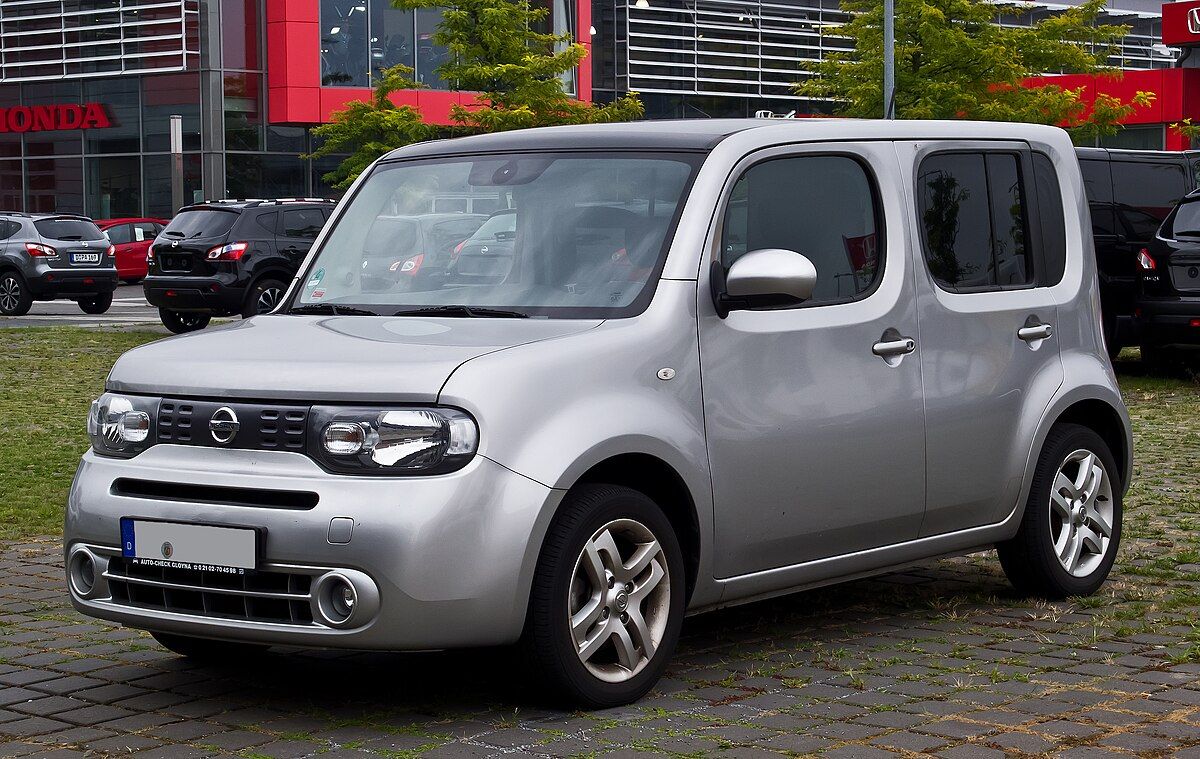
11. **Nissan Cube**: Nissan clearly thought they had stumbled upon a stroke of genius: take a quirky Japanese market oddball, the Cube, and unleash its unique charm on unsuspecting American roads. The ambitious mission? To appeal directly to those free spirits, the individualistic buyers who desperately craved something completely, unapologetically different. With its conspicuously asymmetrical rear window and proudly boxy, unconventional shape, it wasn’t just ‘thinking outside the box’ – it *was* the box, a literal wheeled embodiment of non-conformity. Marketing efforts eagerly pushed this image, trying to convince us this was the ultimate ride for the truly unique, for those who literally thought outside the norm.
But, uh oh, it turned out American buyers weren’t quite ready for *that* much weirdness. The bizarre styling, which was explicitly designed to be its superpower, was largely rejected by the mainstream. It swiftly became apparent that ‘different’ sometimes just means ‘looks strange and makes absolutely no sense to the majority.’ Beyond the polarizing looks, the interior, ironically for a box, often felt surprisingly cramped, and its performance was uninspiring, feeling cheap and decidedly underpowered when compared to its more conventionally styled and capable alternatives.
Ultimately, the Nissan Cube now looks less like a groundbreaking innovation and more like a failed experiment in the art of making cars as weird as humanly possible. That intentionally ugly design, rather than appearing innovative or genuinely practical, now just screams ‘desperate for attention.’ It’s a rolling testament to the idea that there’s a surprisingly fine line between quirky cool and simply baffling. Instead of being genuinely useful or charming, it became a bit of a visual gag that never quite landed.
Driving a Cube today isn’t about broadcasting your individuality; it’s more about broadcasting that you might have missed a few memos on modern car aesthetics. It’s the automotive equivalent of wearing mismatched socks to a black-tie event – a statement, yes, but perhaps not quite the one you intended. The Nissan Cube’s unfortunate transformation from bold statement to outright cringe is a stark lesson in knowing your audience, and perhaps, not pushing the ‘weird’ button quite so hard.

12. **Lincoln Blackwood**: Oh, Lincoln, you really tried, didn’t you? The Blackwood was a truly ambitious, if utterly perplexing, attempt to create the ‘ultimate luxury pickup truck.’ The high-minded idea was to fuse the Town Car’s renowned elegance with the F-150’s rugged utility, specifically targeting wealthy buyers who, presumably, needed to haul their, well, *very expensive* stuff in unparalleled style. A plush, carpeted truck bed and an elegant tonneau cover were touted as features designed to protect that precious cargo, aiming squarely at successful business owners who wanted truck capability without giving up an ounce of opulence.
However, and this is where it all went south, the entire concept was flawed from the very first sketch. Real truck buyers, the ones who actually *use* trucks for truck things like hauling dirt, tools, or lumber, wanted durability and utility, not plush carpet in the bed that would be instantly ruined by a single bag of concrete. And luxury buyers? Most of them didn’t actually need trucks *at all* for their daily lives. The Blackwood ended up satisfying absolutely nobody, existing in a strange, uninhabited space between two completely different automotive worlds. It simply looked utterly ridiculous trying to be both fancy and practical at the same time.
Imagine the sheer bewilderment on a construction worker’s face if you rolled up in a Blackwood, attempting to load some lumber into that impractical, carpeted bed. Or try to picture a luxury car owner attempting to explain why their truck bed is completely unusable for anything remotely resembling actual utility. It was a vehicle that simply made no functional sense, a sartorial misstep in the automotive world. The profound disconnect between its luxury aspirations and its practical limitations made it a rolling, chrome-laden contradiction.
Today, the Lincoln Blackwood stands as a monumental symbol of a brand desperately trying to stay relevant by creating products that simply made no sense to anyone in the market. It’s a painful reminder of a time when luxury brands attempted to force a square peg into a round hole, with predictably cringe-worthy results. The Blackwood’s journey from a grand idea to an automotive punchline is a masterclass in how *not* to blend disparate concepts, leaving us all to wonder, what *were* they thinking when this thing rolled off the line?
So there you have it, folks! A deep dive into the automotive hall of shame, where once-adored or ambitiously designed cars have, for various reasons, lost their sparkle and become synonymous with a distinct brand of cringe. It’s been a wild ride through design missteps, marketing misfires, and just plain bad timing. These vehicles serve as a hilarious, sometimes painful, reminder that what’s ‘cool’ is ever-changing, and sometimes, those changes hit harder than a V8 in a drag race. So, the next time you spot one of these rolling relics, give a knowing nod. Or, you know, a subtle eye-roll – we won’t judge. Because while these cars might make us squirm, they certainly give us plenty to talk about!



